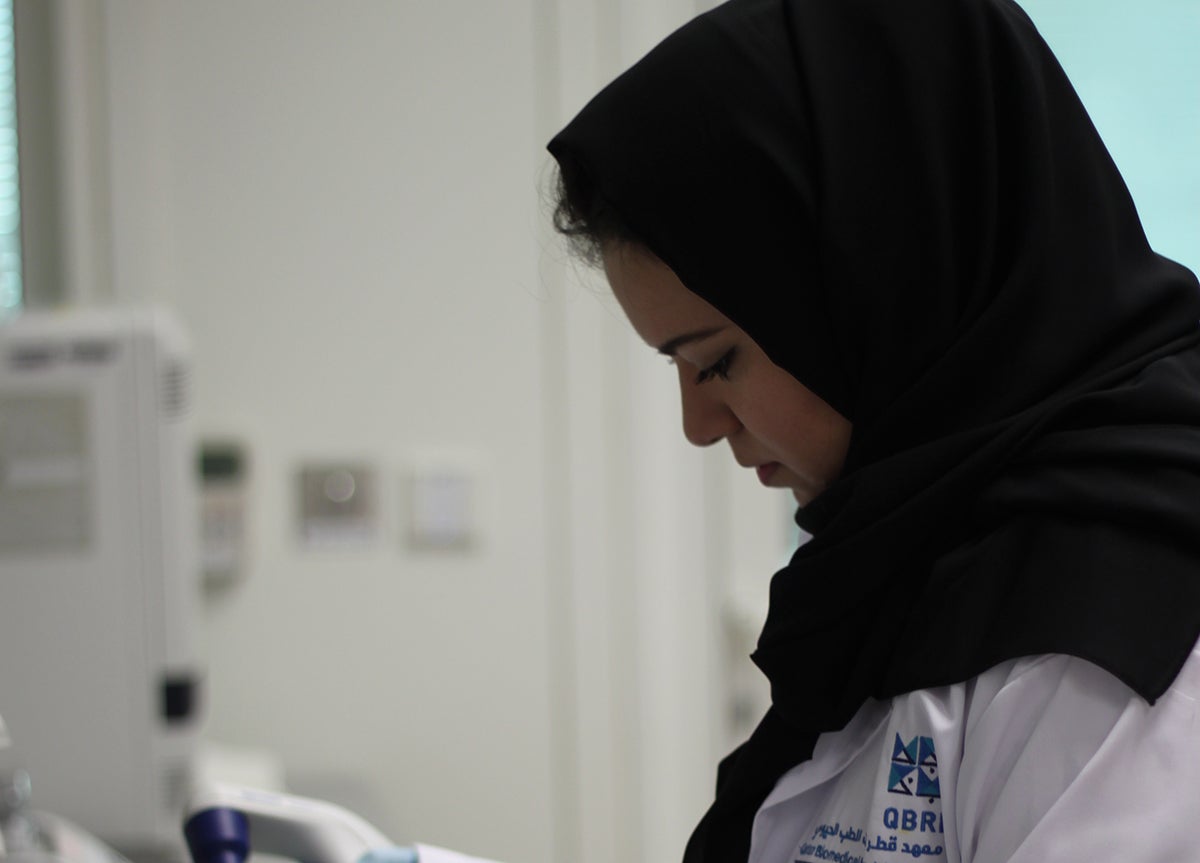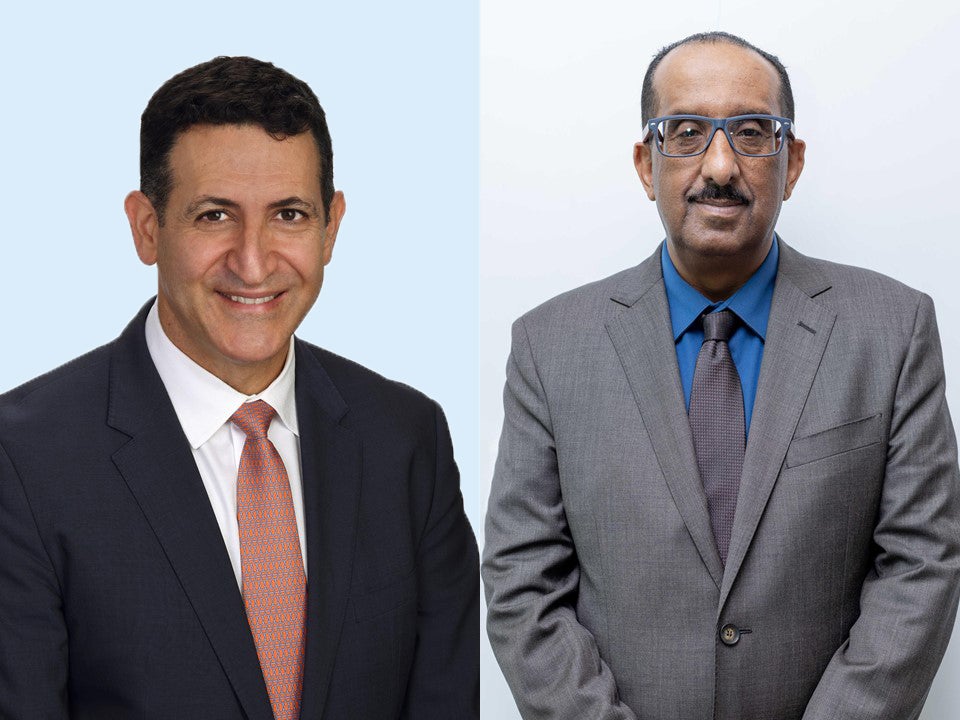
April is Autism Awareness Month. Dr. Abeer Al-Shammari and Dr. Sara Abdulla, research fellows at the Qatar Biomedical Research Institute (QBRI) Neurological Disorders Research Center (NDRC) at Hamad Bin Khalifa University, tell us what we should know about autism spectrum disorder (ASD), and their research aimed at improving early diagnosis and intervention.
1. What are the characteristics of ASD?
Autism is characterized by difficulty in social interactions, communication challenges, and restricted, repetitive behaviors. Many with autism are very sensitive to sensory stimuli such as sounds, lights, smells, and touch. Several medical conditions commonly co-occur with autism, including intellectual disability, anxiety, epilepsy, gastrointestinal issues, and sleep disorders.
2. At what age can we observe its manifestations?
Autism is understood to be a disorder of very early brain development, with behavioral signs and characteristics commonly manifesting between 18 months and three years of age. The earliest signs usually involve the absence of typical behaviors rather than the presence of atypical ones. Parents are in the best position to spot the earliest warning signs and they should continuously monitor their child’s verbal, social, emotional, and cognitive development while keeping in mind that children develop at different paces. Nevertheless, sharing concerns with your doctor if you feel your child is not meeting milestones is important.
3. How is ASD diagnosed?
There is no medical test to diagnose ASD, but a qualified healthcare professional - a developmental pediatrician, child psychiatrist, or clinical psychologist and specialists - would utilize validated screening tools and rely on the history of a child’s development and observing their behavior to make a diagnosis. It can be detected as early as 18 months, but a final confirmed diagnosis cannot be made until the age of two or older.
4. Are symptoms consistent for all individuals?
ASD varies considerably in symptoms and levels of severity as well as associated comorbidities, hence its label ‘spectrum disorder’. This can sometimes make the diagnosis difficult. As the famous quote says: “If you know one person with autism, you know one person with autism”. Some children with autism exhibit only mild impairments while others have more difficult obstacles to overcome. However, every child on the spectrum has, to some degree, impairments in the following areas: difficulties in social communication (verbal and nonverbal), deficits in social interactions, and restricted, repetitive patterns of behavior, interest or activities, and sensory issues.
5. What are the probable causes?
Although the exact cause is still unclear, research suggests that both genetic and environmental factors are likely to play a role. Variations in some genes have been linked to autism, and so far, hundreds of genes have been identified, which further complicates the mechanisms for a genetic contribution to autism. Environmental factors linked to autism include the parents’ advanced age, maternal infections during pregnancy, and birth complications (i.e. extreme preterm babies, and very low birth weight). These factors alone are unlikely to cause autism; however, combined genetic and environmental factors and the interactions between them are likely to increase the risk.
6. Are there treatments, and what are QBRI’s researchers working on?
There is currently no cure for autism. A one-size-fits-all treatment is not appropriate either, as many with ASD have additional comorbidities and treatment plans must be individualized to meet specific needs. Early intervention and support programs, such as speech, behavior, and occupational therapy, are effective strategies. They can help to reduce symptoms and improve cognitive ability and daily living skills, which can help the child be more independent and better integrate within the wider community.
Unfortunately, there are no laboratory tests to determine if a child will develop, or has ASD, and this is an area of investigation at QBRI. A new collaborative project is under way at QBRI to utilize machine learning and artificial intelligence techniques to create an objective diagnostic tool for early detection and diagnosis. QBRI’s NDRC is conducting research in different areas of autism, including epidemiology and phenotyping, modeling ASD using patients’ stem cells, autism biomarkers discovery, autism genetics, and autism immunology. For many of its projects, QBRI collaborates locally and internationally with entities such as Shafallah Center, Hamad Medical Corporation, Cleveland Clinic and Argus Cognitive.
7. Is ASD for life?
Yes, although varying symptoms can improve or reduce over time. Early diagnosis and behavioral interventions are essential in propelling improvements observed in individuals with ASD, taking full advantage of a young brain’s remarkable neuroplasticity. This leads to what is known as “optimal outcome”, a term commonly used for symptoms that are subdued or even lost later in life as a result of appropriate intervention.
8. What will my child’s future be like?
Many individuals with ASD successfully and happily integrate into society, each with a range of abilities, skills, and interests. By identifying their proficiencies, one can suggest suitable career choices. Some are more visually orientated with a keen attention to detail, which gives them an edge in technology, systems, and programming. Others are exceptional with facts. They are known to approach situations more logically, and hence are more objective in decision-making. They also show joy in research and obtaining knowledge, especially in a topic of interest to them. Consequently, individuals with ASD tend to perform well in science and engineering, research, accounting, information technology, manufacturing, journalism, art and design, and animal-related careers.
Their quality of life depends on the foundation provided from childhood. Additionally, some symptoms can become less pronounced as the child gets older. There are multiple support groups and schools to guide families in planning their teenagers’ successful transition into adulthood and achieving their highest level of independence. The idea is to encourage and foster transitions as early as secondary school, where a child is given the tools and skills to identify and develop their strengths, interests, and goals.
9. What is the difference between a child diagnosed with ASD and a child that is hyperactive or has a short attention span?
Attention Deficit Hyperactivity Disorder (ADHD) is the medical term for children considered to be overly active and exhibit a short attention span. Characteristics of ADHD include the invasion of one’s personal space, inability to read social cues, trouble paying attention to people, constantly moving, and having meltdowns. Because these behaviors also manifest in ASD, it can be difficult to distinguish between the two, especially in younger children. The two conditions can occur together in an individual. However, there are key differences, and they are two distinct conditions.
10. Where can I find help and support?
Dedicated local centers and schools provide training programs for children with autism based on their needs, and organize regular workshops and courses for their families. Autism societies are a place for families to learn from each other. Families should also try to use their support network to educate others on autism, how it affects behavior and the best way to communicate with the child etc. Spreading awareness can provide the needed support environment for the child with autism.




